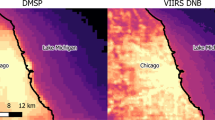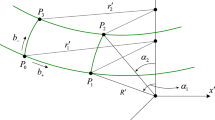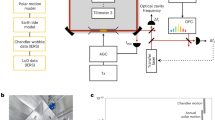Abstract
OBSERVATIONS of the intensity of the zodiacal light at 6530 Å have been made with a photometer on board the satellite D2A ‘Tournesol’. This satellite was launched on April 15, 1971, from Kourou (French Guiana) into an orbit of inclination 46° with a perigee of 456 km and an apogee of 700 km. The spin axis was oriented towards the Sun with an accuracy of ∼15 arc min and a spin period of 60 s (Fig. 1). The line of sight of the photometer is perpendicular to the spin axis and therefore scans the celestial sphere in a plane orthogonal to the ecliptic plane and to the direction of the Sun. Observations in a plane perpendicular to the Earth-Sun line (that is, at elongation ε=90° or ε=−90°) were carried out during the night phase, when the solar depression angle was >25° and the altitude of the lowest observed points was >135 km. Because of this, the signal contained no contribution from the night-glow, but was only due to zodiacal light and starlight. The data cover, without interruption, the period from April 19, 1971, to June 1973.
This is a preview of subscription content, access via your institution
Access options
Subscribe to this journal
Receive 51 print issues and online access
$199.00 per year
only $3.90 per issue
Buy this article
- Purchase on Springer Link
- Instant access to full article PDF
Prices may be subject to local taxes which are calculated during checkout
Similar content being viewed by others
References
Levasseur, A. C., and Blamont, J. E., J. geophys. Res., 78, 3881 (1973).
Roach, F. E., and Megill, L. R., Astrophys. J., 133, 228 (1961).
Gillett, F. C., The Zodiacal Light and the Interplanetary Medium (edit. by Weinberg, J. L.), NASA Special Publication, 150, 9 (1967).
Sparrow, J. G., and Ney, E. P., Astrophys. J., 154, 783 (1968).
Sparrow, J. G., and Ney, E. P., Science, N. Y., 181, 438 (1973).
Smith, L. L., Roach, F. E., and Owen, R. W., Planet. Space Sci., 13, 207 (1965).
Dumont, R., and Sanchez-Martinez, F., Astr Astrophys., 22, 321 (1973).
Lillie, C. F., The Scientific Results from OAO2 (edit. by Code, A. O.), NASA Special Publication, 310, 109 (1971).
Roosen, R. G., Rev. Geophys. Space Phys., 9, 275 (1971).
Author information
Authors and Affiliations
Rights and permissions
About this article
Cite this article
LEVASSEUR, A., BLAMONT, J. Satellite Observations of Intensity Variations of the Zodiacal Light. Nature 246, 26–28 (1973). https://doi.org/10.1038/246026a0
Received:
Revised:
Issue Date:
DOI: https://doi.org/10.1038/246026a0
This article is cited by
-
Interplanetary Dust, Meteoroids, Meteors and Meteorites
Space Science Reviews (2019)
-
Zodiacal light ? A measure of the interplanetary environment
Space Science Reviews (1975)
-
Is the zodiacal light intensity steady?
Nature (1974)
Comments
By submitting a comment you agree to abide by our Terms and Community Guidelines. If you find something abusive or that does not comply with our terms or guidelines please flag it as inappropriate.



